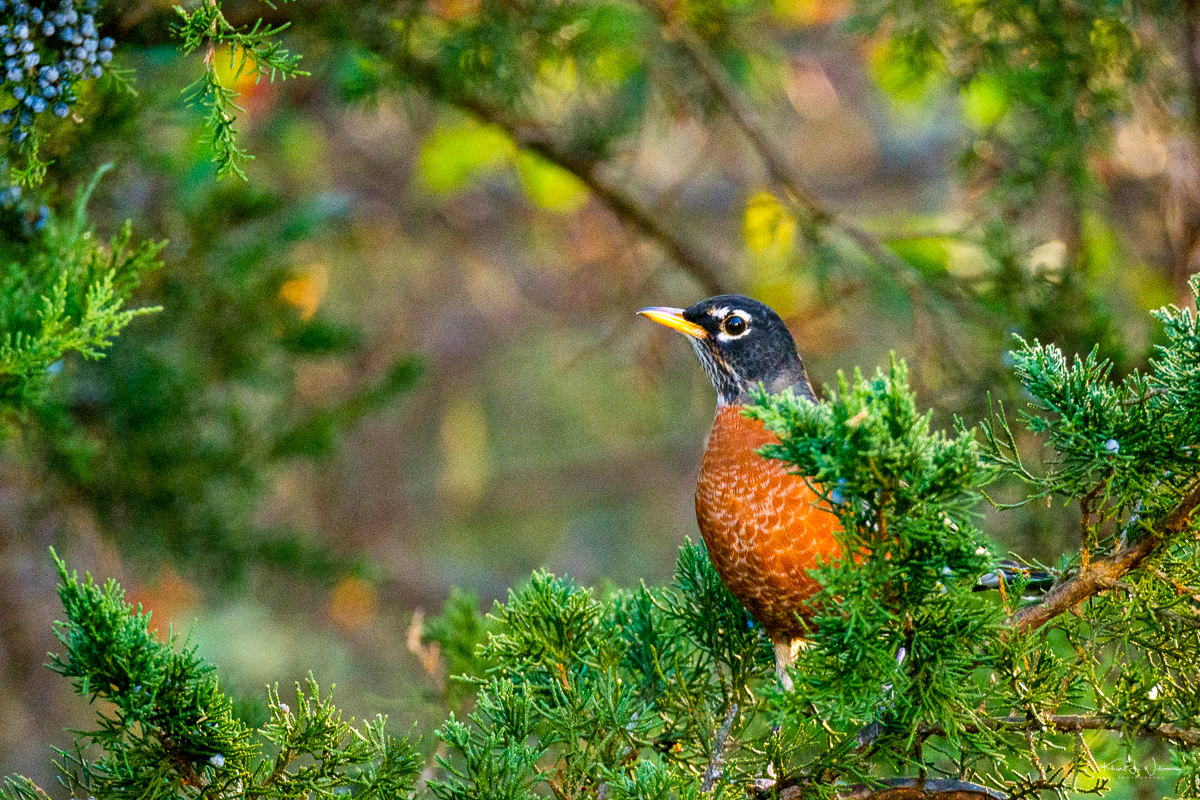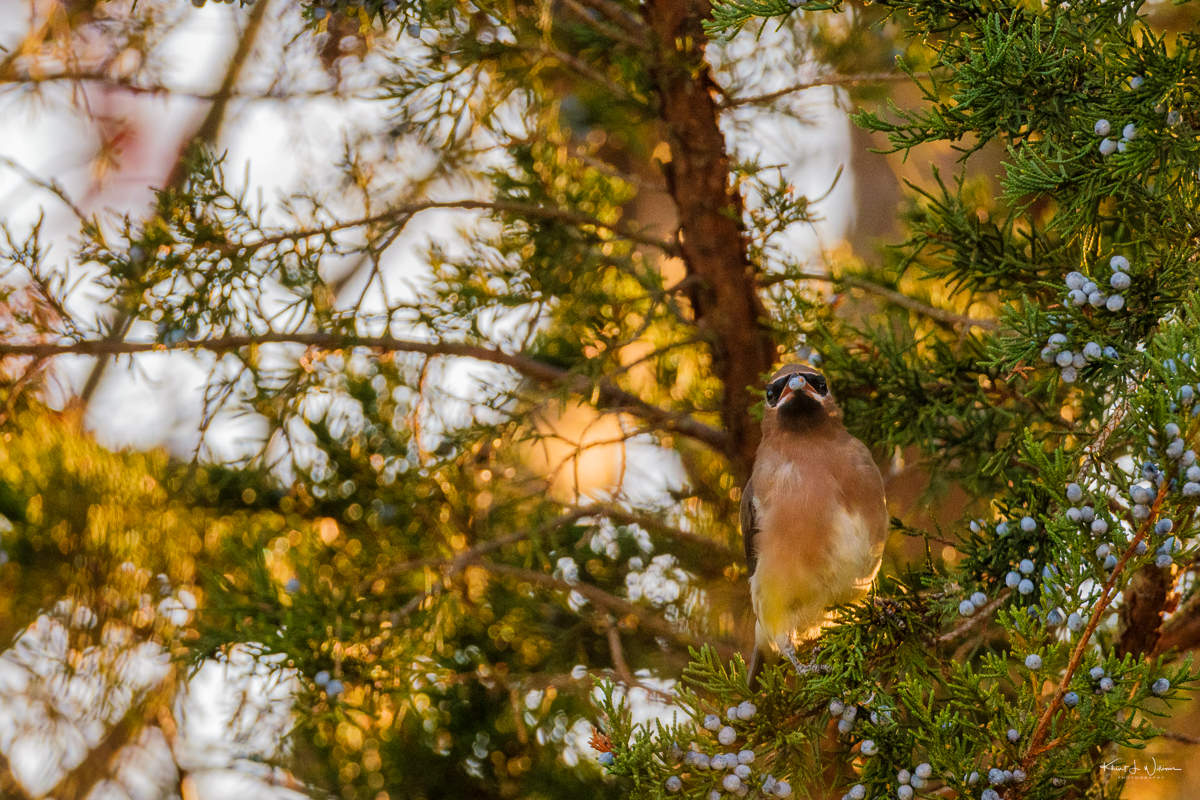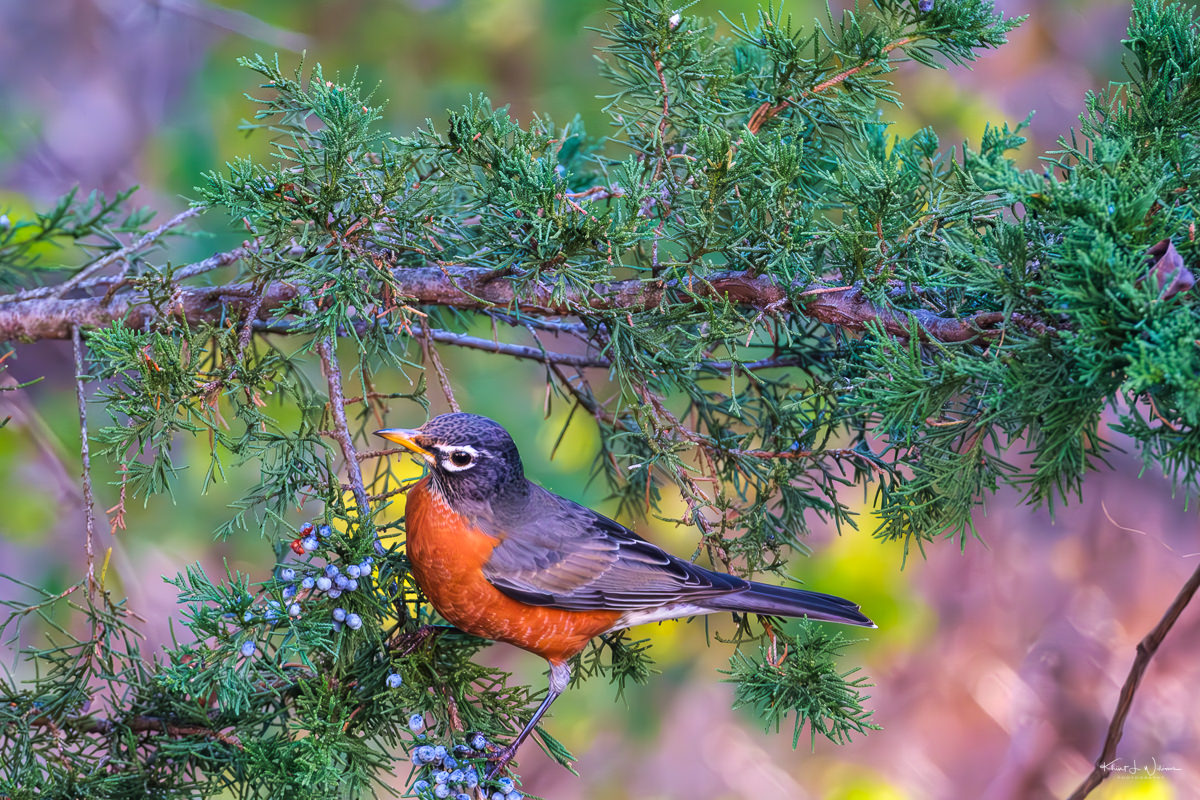On two mid-November mornings, I had the satisfying experience of watching dozens of birds in the wooded area of my backyard. The scene was lively, with the birds busily engaging with their surroundings. It was a spectacle that truly caught my attention.
As I watched, I noticed many of these birds were mainly drawn to the juniper berries. It was fascinating to see how they fed on them with eagerness. I enjoyed how they interacted with the berries and moved around the branches.
Some birds were quick and agile, darting in and out of the foliage. In contrast, others seemed more methodical and deliberate in their movements. Observing and photographing them gave me a deeper appreciation for the diversity of bird species that visit my backyard.

I couldn't resist the opportunity to photograph these moments. With my XT-3 camera and XF150-600mmF5.6-8 R LM OIS WR lens, I tried to capture the essence of this lively scene. The challenge was photographing the birds in a way that conveyed the liveliness and energy of their feeding activity. I focused on getting shots that showed their interactions with the berries and each other, hoping to freeze these fleeting moments in time.
This is the first time I have seen a Cedar waxwing. Cedar Waxwings (Bombycilla cedrorum) are medium-sized birds with a blend of brown, grey, and yellow plumage, noted for their bright yellow tail tips and red, waxy wingtips. They are considered highly social and often seen in flocks, especially in berry-rich locations. They display unusual behaviours like passing berries among flock members.

Their diet mainly consists of fruit and insects, adapting to habitats with abundant fruit-bearing trees and shrubs, such as gardens, orchards, and riverbanks. While Cedar Waxwings are somewhat migratory, moving in response to fruit availability, their migratory patterns vary; in some regions, they are year-round residents, while in others, they appear more seasonally. This adaptability in feeding and migration underscores their reliance on healthy, fruit-rich environments.

The simple joys of watching wildlife in my backyard are always refreshing.

